COOK ISLANDS TO AMERICAN SAMOA
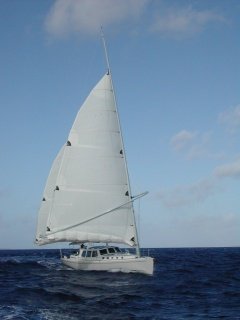
Convergence flying by
We left Suwarrow a few hours after Tackless II and a few hours ahead of Convergence. Our winds were out of the ESE at 22 knots with a 4′ SE swell as we steered 250º at 7 knots.
We saw Convergence come flying up from behind us, and she passed us like we were standing still. By the time we took a few pictures, she was out of photo range. That boat really flies!
We may not keep pace with Convergence, but we were also making good time. During our first 24 hours, our winds remained 20 knots or above, and we sailed with a double-reefed main, staysail, and 50% of our #1 jib. We covered 155 miles in our first 24 hours.
Our second day was uneventful. Our winds were still 20 knots, and we sailed with the same sails.
We thought we would be more comfortable with a little more distance between us and Tackless II during our second night out, so we furled in our jib and headed off a few degrees to increase our distance from her. We would later be sorry we gave up that little bit of time.
The next day we returned to our double-reefed main, staysail, and 50% of our #1 jib. We continued with these sails during our third day and night.
We planned to make landfall by sundown on our fourth day, and fish slayer thought it would be nice to have fresh fish for dinner. He tossed in a lure and caught a little mahi mahi within a few minutes.
Shortly thereafter, we started getting pounded by a series of squalls that kept us busy for a few hours. During the squalls, winds would gust in to the 30s, and then they would go very light and shift 45º or so. So we were kept busy altering course and trimming sails.
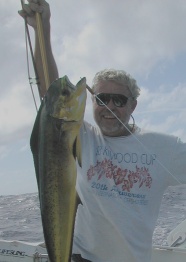
Fishing without britches
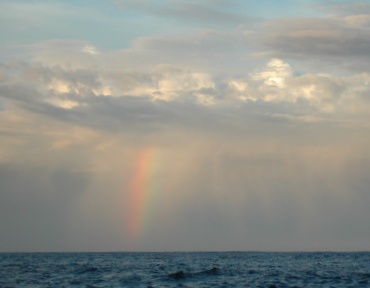
Squalls and vertical rainbows
Then the winds came out of the direction we were heading at only six knots, so we fired up the engine and motored the last 12 miles. Unfortunately, it was now nearly dark. Tackless II was a few hours ahead of us, and she made it in before dark, but we did not.
We have previously agreed that we would not enter a strange harbor at night. However, we knew that Pago Pago was a large harbor, and our charts indicated that it was well marked and lit. We discussed our options, and we decided to enter even though it was dark.
The buoy marking the entrance to the channel was supposed to be lit, and it was not. We only found it using radar. We probably should have headed back out and held off for the night, but we forged ahead. Although the rest of the channel was relatively well marked, we were both uneasy.
We were looking forward to being securely anchored after our anxiety-provoking entry, and we circled until we thought we had found a good spot. We dropped our CQR in 25′, but it failed to grab the bottom at all. We raised it to move to another spot, and it was completely fouled. The tip was covered with a plastic bag, and it brought up coiled line and rigging wire from the bottom. We circled a bit more, and we finally found secure holding in 40′ of mud in the center of the anchorage. It felt good to be at anchor.
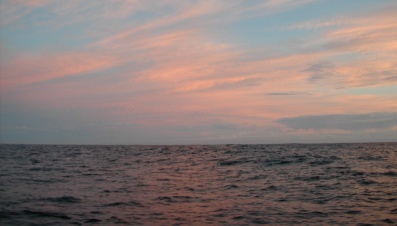
Nice sunset
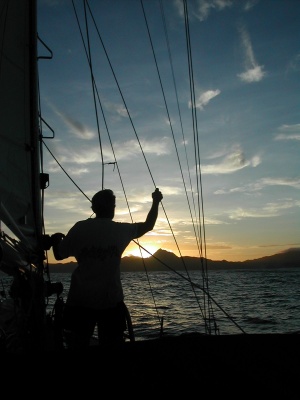
To enter or not to enter?
In retrospect, it was a good exercise to do this (we rarely navigate so precisely), but we don’t want to do it again. It is good to know that we can do it if we must, but we won’t do it again unless absolutely necessary. There are good reasons not to make night entries, and we worried about all of them as we crept in after dark.
Read about our stay in American Samoa.